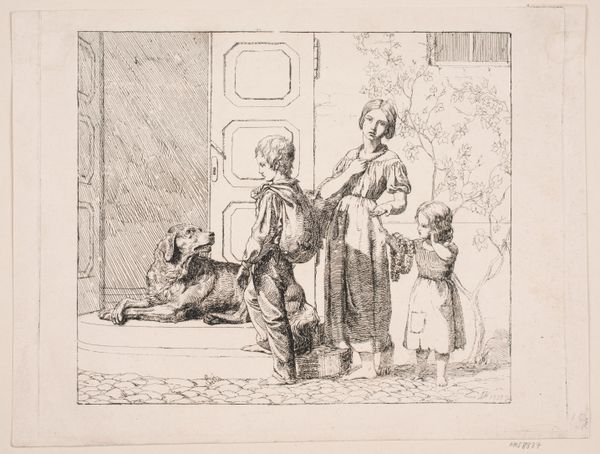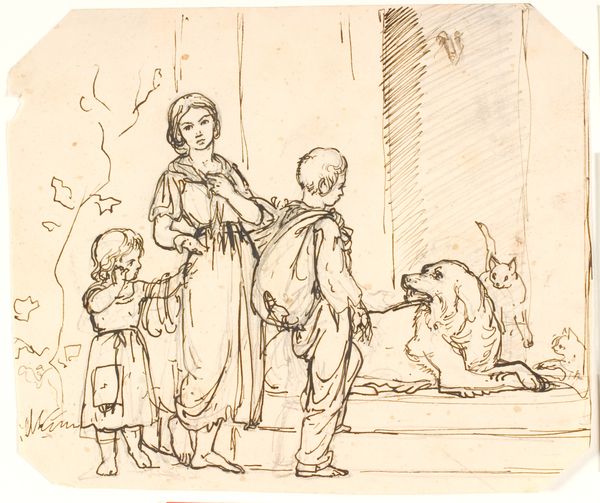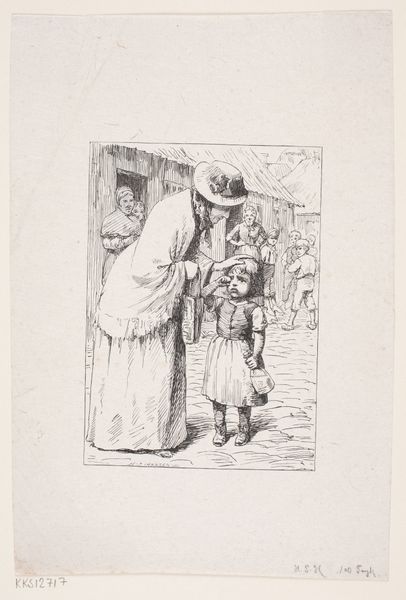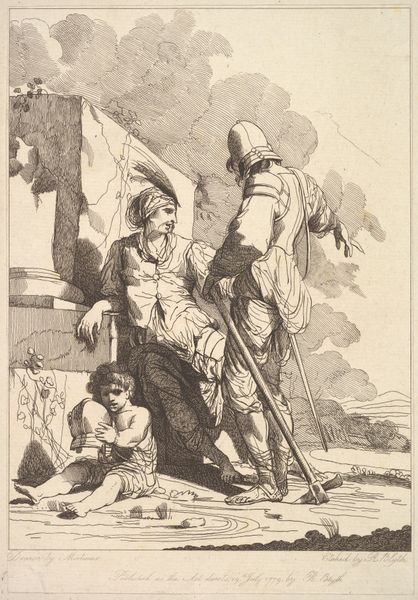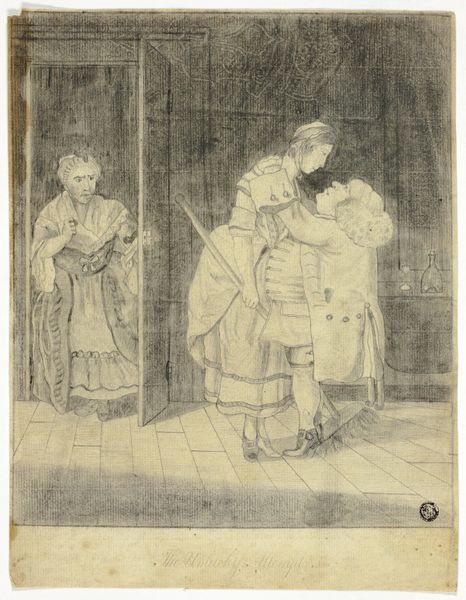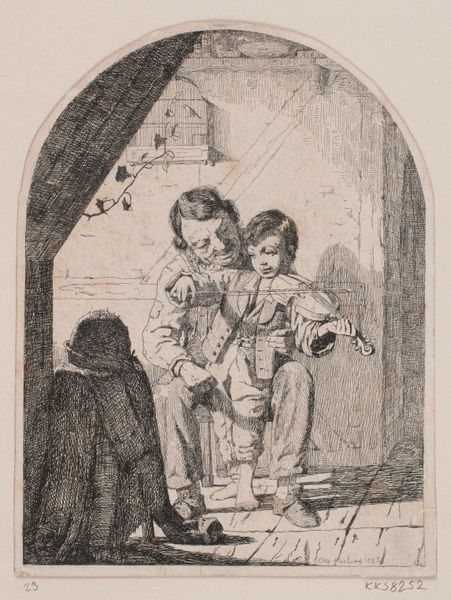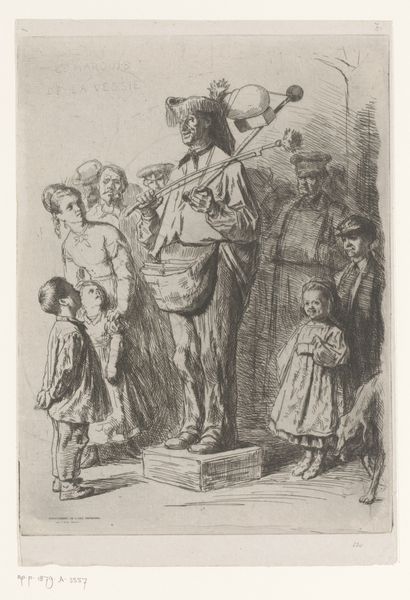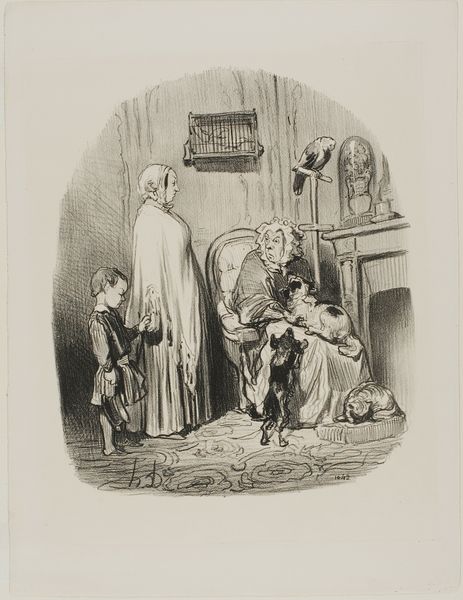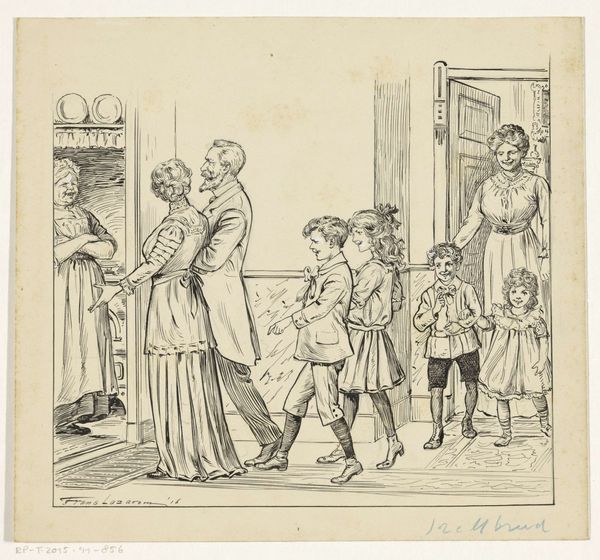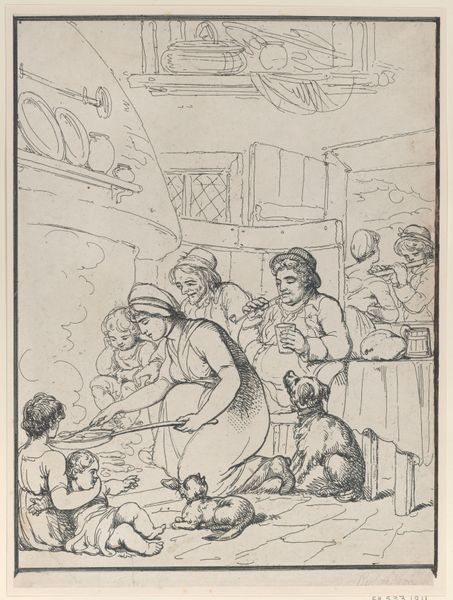
print, engraving
#
portrait
# print
#
figuration
#
romanticism
#
genre-painting
#
engraving
Dimensions: 160 mm (height) x 185 mm (width) (bladmaal)
Editor: This is "Three Beggar Children" by Lorenz Frølich, an 1839 engraving. It's a very detailed print, and it strikes me as rather somber. What stands out to you in this work? Curator: What I see is a reflection of 19th-century societal attitudes towards poverty and childhood. The image is meticulously crafted, isn't it? But that very detail risks aestheticizing the children's plight. Consider the Romantic movement's focus on emotion and the individual – how might this image, produced during that time, engage with or perhaps exploit those ideals? Editor: Exploit? I hadn't thought of it that way. I guess I was seeing it more as a commentary on poverty. Curator: It could be both. Are these children simply subjects of pity, or does the artist subtly critique the social structures that necessitate their begging? Notice the dog – a symbol of loyalty and domesticity – juxtaposed with the children's destitution. What does that say about who is deemed worthy of care and protection? Editor: So, you're suggesting the image isn't just a sentimental portrayal, but potentially a challenge to the viewer’s own complicity in these inequalities? Curator: Precisely! And what about gender here? What roles do these children have to take on in this familial structure due to poverty? These aren't just images of children; they are potent reflections of social and economic injustices deeply embedded in the time. We can consider intersectional viewpoints here - class, age and family position impacting an individuals situation. Editor: That's given me a completely new way of seeing this. It's much more complex than I initially thought. Curator: Absolutely. Art often holds a mirror to society, forcing us to confront uncomfortable truths about power, privilege, and our shared humanity.
Comments
No comments
Be the first to comment and join the conversation on the ultimate creative platform.
